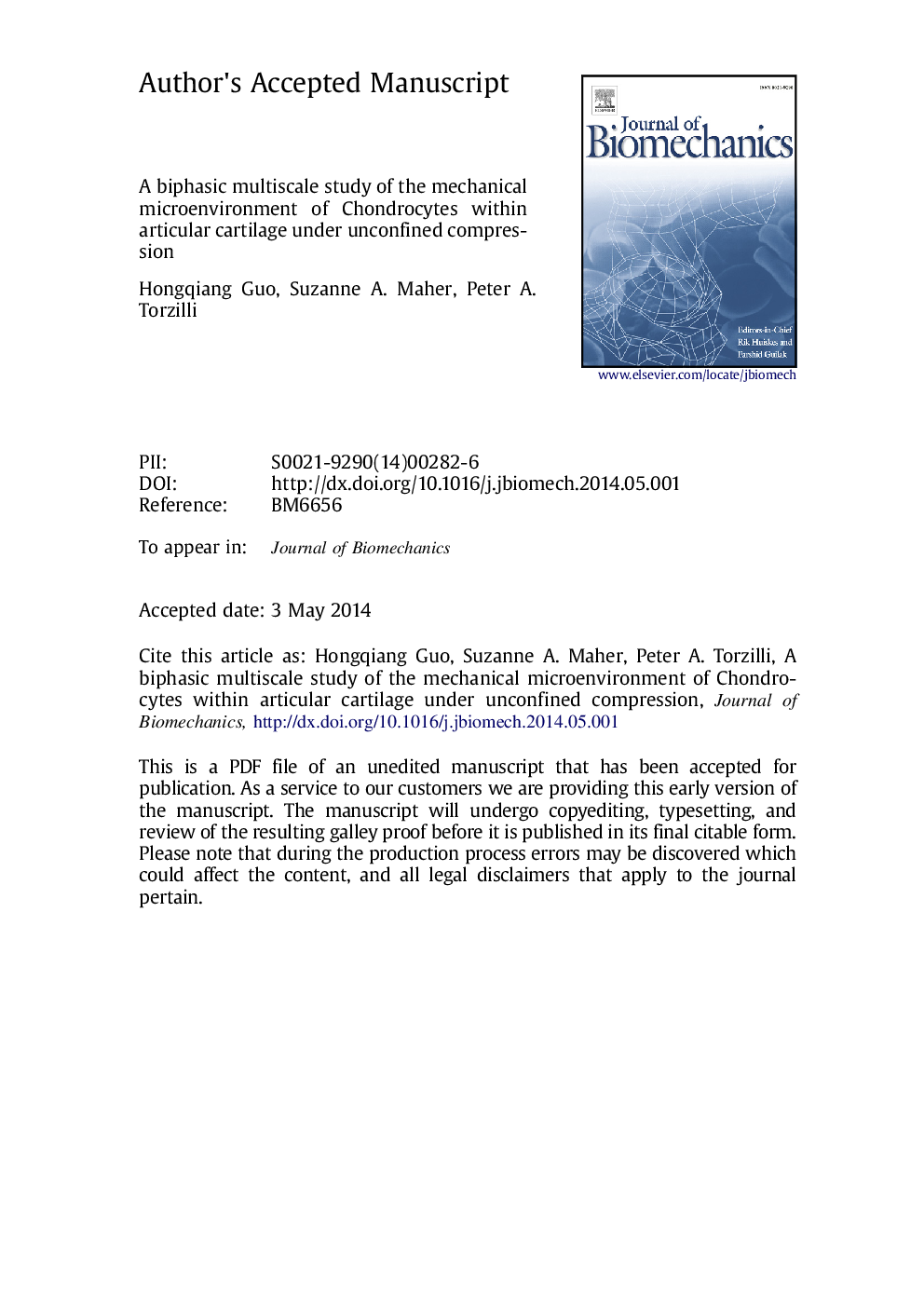| Article ID | Journal | Published Year | Pages | File Type |
|---|---|---|---|---|
| 10431857 | Journal of Biomechanics | 2014 | 31 Pages |
Abstract
Computational analyses have been used to study the biomechanical microenvironment of the chondrocyte that cannot be assessed by in vitro experimental studies; yet all computational studies thus far have focused on the effect of zonal location (superficial, middle, and deep) on the mechanical microenvironment of chondrocytes. The aim of this paper was to study the effect of both zonal and radial locations on the biomechanical microenvironment of chondrocytes in inhomogeneous cartilage under unconfined stress relaxation. A biphasic multiscale approach was employed and nine chondrocytes in different locations were studied. Hyperelastic biphasic theory and depth-dependent aggregate modulus and permeability of articular cartilage were included in the models. It was found that both zonal and radial locations affected the biomechanical stresses and strains of the chondrocytes. Chondrocytes in the mid-radial location had increased volume during the early stage of the loading process. Maximum principal shear stress at the interface between the chondrocyte and the extracellular matrix (ECM) increased with depth, yet that at the ECM-pericellular matrix (PCM) interface had an inverse trend. Fluid pressure decreased with depth, while the fluid pressure difference between the top and bottom boundaries of the microscale model increased with depth. Regardless of location, fluid was exchanged between the chondrocyte, PCM, and ECM. These findings suggested that even under simple compressive loading conditions, the biomechanical microenvironment of the chondrocytes, PCM and ECM was spatially dependent. The current study provides new insight on chondrocyte biomechanics.
Related Topics
Physical Sciences and Engineering
Engineering
Biomedical Engineering
Authors
Hongqiang Guo, Suzanne A. Maher, Peter A. Torzilli,
